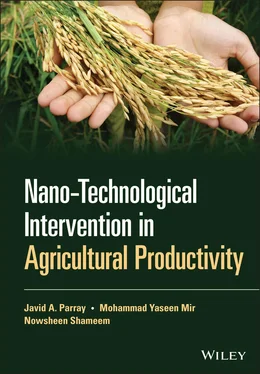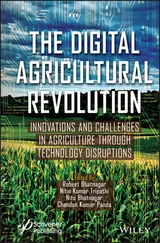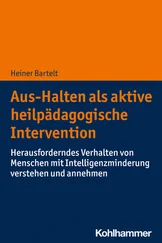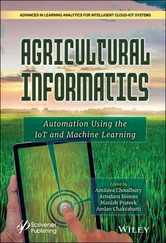1 1 Yang, L. and Watts, D.J. (2005). Particle surface characteristics may play an important role in phytotoxicity of alumina nanoparticles. Toxicol. Lett. 158 (2): 122–132.
2 2 Kovochich, M., Xia, T., Xu, J. et al. (2005). Principles and procedures to assess nanoparticles. Environ. Sci. Technol. 39 (5): 1250–1256.
3 3 Sayes, C.M., Fortner, J.D., Guo, W. et al. (2004). The differential cytotoxicity of water‐soluble fullerenes. Nano Lett. 4 (10): 1881–1887.
4 4 Daroczi, B., Kari, G., McAleer, M.F. et al. (2006). In vivo radioprotection by the fullerene nanoparticle DF‐1 as assessed in a zebrafish model. Clin. Cancer Res. 12 (23): 7086–7091.
5 5 Hoffmann, M., Holtze, E.M., and Wiesner, M.R. (2007). Reactive oxygen species generation on nanoparticulate material. In: Environmental Nanotechnology: Applications and Impacts of Nanomaterials (eds. M.R. Wiesner and J.Y. Bottero), 155–203. New York: McGraw Hill.
6 6 Joner, E.J., Hartnik, T., and Amundsen, C.E. (2008). Environmental fate and ecotoxicity of engineered nanoparticles. In: Norwegian Pollution Control Authority Report No. TA 2304/2007 (eds. E.J. Joner, T. Hartnik and C.E. Amundsen), 1–64. Norway: Bioforsk.
7 7 Lyon, D.Y., Thill, A., Rose, J., and Alvarez, P.J.J. (2007). Ecotoxicological impacts of nanomaterials. In: Environmental Nanotechnology: Applications and Impacts of Nanomaterials (eds. M.R. Wiesner and J.Y. Bottero), 445–479. New York: McGraw Hill.
8 8 Abbott, L.C. and Maynard, A.D. (2010). Exposure assessment approaches for engineered nanomaterials. Risk Anal. 30 (11): 1634–1644.
9 9 Maynard, A.D. (2007). Nanotechnology: the next big thing, or much ado about nothing? Ann. Occup. Hyg. 51 (1): 1–12.
10 10 Schulenburg, M. (2008). Nanoparticles – Small Things, Big Effects Opportunities and Risks. Berlin: Federal Ministry of Education and Research.
11 11 Bottero, J.Y., Rose, J., and Wiesner, M.R. (2006). Nanotechnologies: tools for sustainability in a new wave of water treatment processes. Integr. Environ. Assess. Manage. 2 (4): 391–395.
12 12 Macanas, J., Ruiz, P., Alonso, A. et al. (2011). Ion‐exchange assisted synthesis of polymer‐stabilized metal nanoparticles. In: Solvent Extraction and Ion Exchange: A Series of Advances, vol. 20 (ed. S.G. AK), 1–43. Boca Raton, FL: CRC Press‐Taylor & Francis Group.
13 13 Vatta, L.L., Sanderson, R.D., and Koch, K.R. (2006). Magnetic nanoparticles: properties and potential applications. Pure Appl. Chem. 78 (9): 1793–1801.
14 14 Belotelov, V.I., Perlo, P., and Zvezdin, A.K. (2005). Magneto optics of granular materials and new optical methods of magnetic nanoparticles and nanostructures imaging. In: Metal‐Polymer Nanocomposites, vol. 8 (eds. L. Nicolais and G. Carotenuto), 201–240. New York: Wiley.
15 15 Qiao, R., Zhang, X.L., Qiu, R. et al. (2007). Fabrication of superparamagnetic cobalt nanoparticles‐embedded block copolymer microcapsules. J. Phys. Chem. C 111 (6): 2426–2429.
16 16 Oberdorster, E. (2004). Manufactured nanomaterials (fullerenes, C60) induce oxidative stress in the brain of juvenile largemouth bass. Environ. Health Perspect. 112 (10): 1058–1062.
17 17 Fortner, J.D., Lyon, D.Y., Sayes, C.M. et al. (2005). C60 in water: nanocrystal formation and microbial response. Environ. Sci. Technol. 39 (11): 4307–4316.
18 18 Wiesner, M.R., Lowry, G.V., Alvarez, P. et al. (2006). Assessing the risks of manufactured nanomaterials. Environ. Sci. Technol. 40 (14): 4336–4345.
19 19 Tang, Y.J., Ashcroft, J.M., Chen, D. et al. (2007). Charge‐associated effects of fullerene derivatives on microbial structural integrity and central metabolism. Nano Lett. 7 (3): 754–760.
20 20 Zhu, X., Zhu, L., Li, Y. et al. (2007). Developmental toxicity in zebrafish (Danio rerio) embryos after exposure to manufactured nanomaterials: buckminsterfullerene aggregates (nC60) and fullerol. Environ. Toxicol. Chem. 26 (5): 976–979.
21 21 Cheng, J., Flahaut, E., and Shuk, H.C. (2007). Effect of carbon nanotubes on developing zebrafish (Danio rerio) embryos. Environ. Toxicol. Chem. 26 (4): 708–716.
22 22 Smith, C.J., Shaw, B.J., and Handy, R.D. (2007). Toxicity of single walled carbon nanotubes to rainbow trout, (Oncorhynchus mykiss): respiratory toxicity, organ pathologies, and other physiological effects. Aquat. Toxicol. 82 (2): 94–109.
23 23 Roberts, A.P., Mount, A.S., and Seda, B. (2007). In vivo biomodification of lipid‐coated carbon nanotubes by Daphnia magna. Environ. Sci. Technol. 41 (8): 3028–3029.
24 24 Oberdorster, E., Zhu, S., Blickley, T.M. et al. (2006). Ecotoxicology of carbon‐based engineered nanoparticles: effects of fullerene (C60) on aquatic organisms. Carbon 44 (6): 1112–1120.
25 25 Panyala, N.R., Pena‐Mendez, E.M., and Havel, J. (2008). Silver or silver nanoparticles: a hazardous threat to the environment and human health. J. Appl. Biomed. 6 (3): 117–129.
26 26 Rana, S. and Kalaichelvan, P.T. (2011). Antibacterial effects of metal nanoparticles. Adv. Biotech 2 (2): 21–23.
27 27 Griffitt, R.J., Weil, R., Hyndman, K.A. et al. (2007). Exposure to copper nanoparticles causes gill injury and acute lethality in zebrafish (Danio rerio). Environ. Sci. Technol. 41 (23): 8178–8186.
28 28 Cioffi, N., Ditaranto, N., Torsi, L. et al. (2005). Synthesis, analytical characterization and bioactivity of Ag and Cu nanoparticles embedded in poly‐vinyl‐methyl‐ketone films. Anal. Bioanal. Chem. 382 (8): 1912–1918.
29 29 Pan, Y., Neuss, S., Leifert, A. et al. (2007). Size‐dependent cytotoxicity of gold nanoparticles. Small 3 (11): 1941–1949.
30 30 Braydich‐Stolle, L., Hussain, S., Schlager, J.J., and Hofmann, M.C. (2005). In vitro cytotoxicity of nanoparticles in mammalian germline stem cells. Toxicol. Sci. 88 (2): 412–419.
31 31 Hussain, S.M., Javorina, A.K., Schrand, A.M. et al. (2006). The interaction of manganese nanoparticles with PC‐12 cells induces dopamine depletion. Toxicol. Sci. 92 (2): 456–463.
32 32 Chen, X. and Schluesener, H.J. (2008). Nanosilver: a nanoproduct in medical application. Toxicol. Lett. 176 (1): 1–12.
33 33 Hogstrand, C. and Wood, C.M. The toxicity of silver to marine fish. In: Proceedings of the 4th International Conference on Transport, Fate and Effects of Silver in the Environment (eds. A.W. Andren and T.W. Bober), 109–112. Lexington Kentucky, USA: University of Kentucky; McMaster University, Hamilton,Ontario,Canada.
34 34 Eisler, R. (1996). A review of silver hazards to plants and animals. In: Proceedings of the 4th International Conference on Transport Fate and Effects of Silver in the Environment (eds. A.W. Andren and T.W. Bober), 143–144. Madison, WI: University of Vasconia sea giant institute Madison.
35 35 Throback, I.N., Johansson, M., Rosenquist, M. et al. (2007). Silver (Ag+) reduces denitrification and induces enrichment of novel nirK genotypes in soil. FEMS Microbiol. Lett. 270 (2): 189–194. Madison, WI: Sea Grant Institute.
36 36 Wood, C.M., Playle, R.C., and Hogstrand, C. (1999). Physiology and modelling of mechanisms of silver uptake and toxicity in fish. Environ. Toxicol. Chem. 1 (18): 71–83.
37 37 Ajayan, P.M., Schadler, L.S., and Braun, L.S. (2006). Nanocomposite Science and Technology. New York: Wiley.
38 38 Kim, J. and Bruggen, B.V. (2010). The use of nanoparticles in polymeric and ceramic membrane structures: review of manufacturing procedures and performance improvement for water treatment. Environ. Pollut. 158 (7): 2335–2349.
39 39 Rozenberg, B.A. and Tenne, R. (2008). Polymer‐assisted fabrication of nanoparticles and nanocomposites. Prog. Polym. Sci. 33 (1): 40–112.
40 40 Pomogailo, A.D. (2005). Polymer sol‐gel synthesis of hybrid nanocomposites. Colloid J. 67 (6): 658–677.
Читать дальше











![Chade-Meng Tan - Search Inside Yourself - Increase Productivity, Creativity and Happiness [ePub edition]](/books/703803/chade-thumb.webp)
